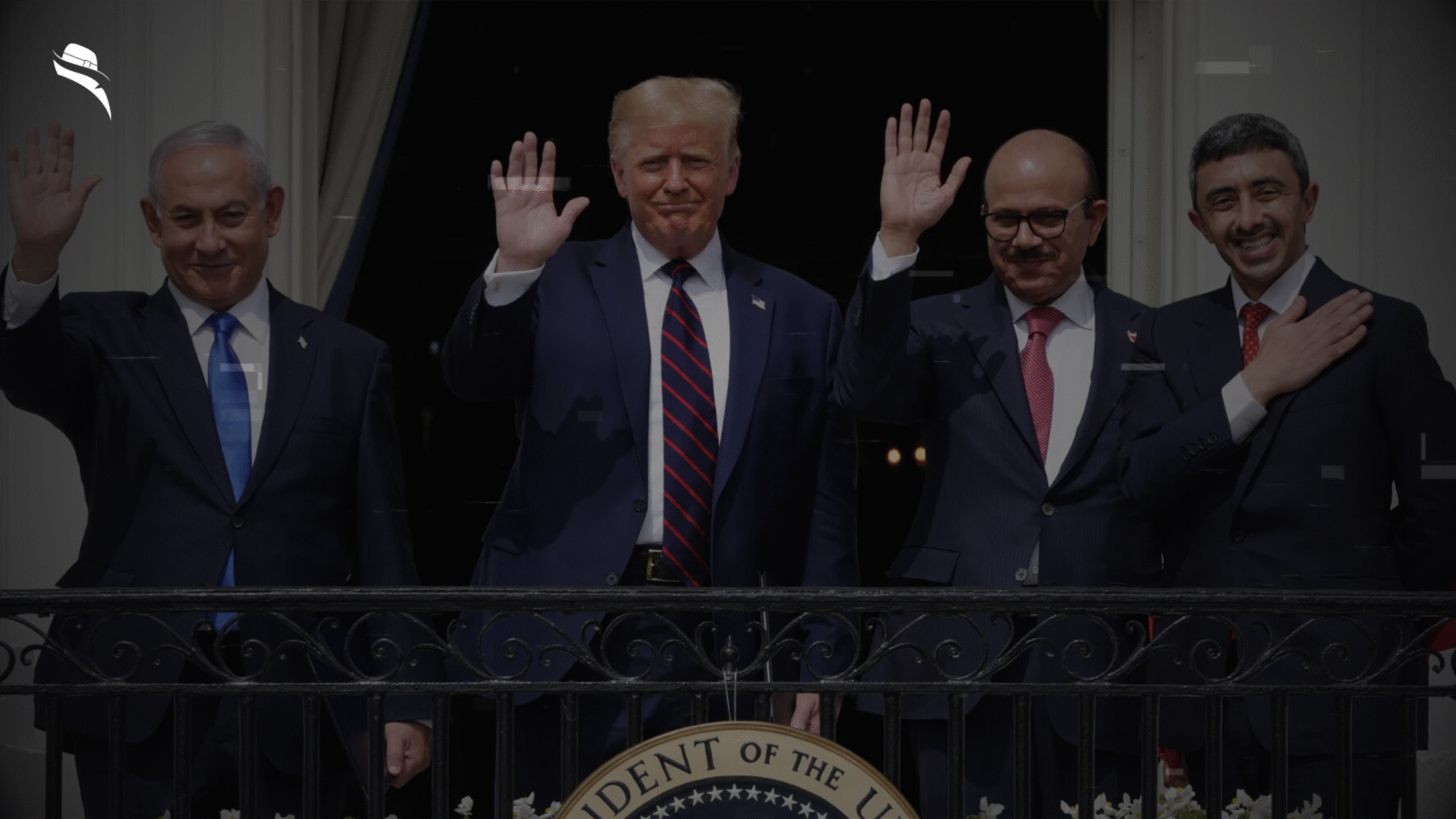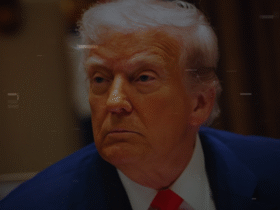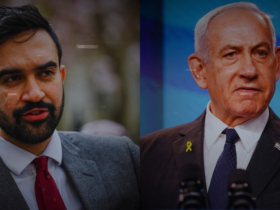The Abraham Accords, signed on September 15, 2020, marked a historic shift in Middle Eastern diplomacy by establishing peace agreements between Israel and several Arab nations. We witnessed unprecedented normalization of relations between Israel and the United Arab Emirates, Bahrain, and Morocco, with Sudan also initiating the normalization process. What began as a strategic alignment against a common perceived threat from Iran has evolved into significant economic partnerships, with the UAE and Israel establishing a free-trade agreement in 2022 that aims to increase bilateral trade to $10 billion by 2027.
Despite the devastating impact of the October 2023 Gaza conflict, which resulted in thousands of civilian casualties and widespread condemnation of Israel’s actions, the Abraham Accords have shown remarkable resilience. The countries involved in the Abraham Accords maintained diplomatic relations while balancing their strategic interests with public sentiment. Additionally, Israel’s arms exports increased by 55% since the accords were signed, reaching an all-time high of $11.3 billion in 2021. However, the path forward faces complications, particularly regarding Saudi Arabia’s potential normalization with Israel, which now appears contingent on progress toward Palestinian statehood. In this article, we’ll examine how these diplomatic breakthroughs have weathered recent challenges and explore the evolving regional dynamics that continue to shape the Middle East.
Strategic Foundations of the Abraham Accords
Established through negotiations led by the Trump administration, the Abraham Accords represent a fundamental realignment in Middle Eastern diplomacy. Named after the biblical patriarch recognized by both Judaism and Islam, these agreements aimed to create a new paradigm for regional cooperation.
What are the Abraham Accords: Origin and Objectives
The Abraham Accords emerged from diplomatic efforts spearheaded by Trump’s advisor Jared Kushner following the “Peace to Prosperity” workshop held in Bahrain in June 2019. Formally signed on September 15, 2020, on the White House’s Truman Balcony amid an elaborate ceremony designed to evoke historic peace treaties, the agreements established full diplomatic relations between Israel and several Arab nations. Their overarching objective was to defuse regional tensions through normalization between Israel and moderate Arab states. Furthermore, the accords aimed to solidify America’s role as a regional security guarantor while creating a framework for peace and stability premised on economic development.
Geoeconomic Vision Behind the Accords
The fundamental inspiration behind the Abraham Accords was that geoeconomics could overcome seemingly intractable geopolitical conflicts. This vision centered on providing financial and economic incentives to circumvent long-standing regional tensions. Consequently, participation in the Israeli-Emirati agreement is expected to create four million new jobs and generate one trillion dollars in new economic activity in the coming decade. The establishment of the three-billion-dollar Abraham Fund by Israel, the UAE, and the United States further demonstrates the economic foundation of this diplomatic breakthrough.
Initial Signatories and Their Motivations
The UAE initiated normalization discussions partly on the pretext of stopping Israel’s planned annexation of West Bank territories. For the Emirates, the accords offered access to advanced technologies and expanded trade opportunities, alongside a sweetened offer from the United States to sell 50 F-35 combat jets. Bahrain quickly followed the UAE’s lead, with senior officials contacting Kushner stating, “We want to be next”. Meanwhile, Morocco’s participation was closely tied to its sovereignty claims over Western Sahara, with the Trump administration recognizing Moroccan claims to the territory in exchange for normalization with Israel. Notably, all initial signatories shared a common strategic concern regarding Iran’s regional influence.
Post-Gaza Resilience and Country-Level Adjustments
Despite the October 2023 Gaza conflict’s regional impact, the Abraham Accords have demonstrated remarkable resilience at the country level, with economic and security cooperation continuing, albeit with adjustments.
UAE-Israel Trade and Technology Cooperation Post-2023
The UAE-Israel Comprehensive Economic Partnership Agreement (CEPA), which entered into force on April 1, 2023, remains a cornerstone of bilateral relations. This agreement enables greater market access for UAE products entering Israel, covering more than 96% of tariff lines and 99% of trade value. In fact, bilateral trade between Israel and the UAE is projected to exceed $3 billion by the end of the year. Although the Gaza conflict initially cooled relations, with signature projects like the joint exploitation of Israel’s largest offshore natural gas field temporarily on hold, economic engagement has persisted. Indeed, compared to the same period in 2023, bilateral trade with the UAE in the first seven months of 2024 increased by 4%. The conflict has even created new opportunities, including an alternative land route between the UAE and Israel across Saudi Arabia and Jordan, allowing Israeli companies to bypass Houthi attacks in the Red Sea.
Bahrain’s Security Pact and Diplomatic Continuity
Although Bahrain recalled its ambassador to Israel in November 2023 as the Gaza war escalated, the kingdom has maintained its commitment to the Abraham Accords. In September 2023, Bahrain signed the Comprehensive Security Integration and Prosperity Agreement (C-SIPA) with the United States, formalizing security cooperation. Sheikh Nasser Bin Hamad Al Khalifa, Bahrain’s national security advisor, recently described the normalization agreement as “one of the most important milestones” the country has achieved. Bahrain’s bilateral trade with Israel, while modest at less than $20 million in 2021-2022, saw a remarkable 900% increase in the first seven months of 2024 compared to the same period in 2023.
Morocco’s Western Sahara Leverage and Defense Ties
Morocco’s normalization with Israel remains closely linked to its sovereignty claims over Western Sahara. The United States recognized Moroccan sovereignty over the territory in 2020, followed by Israel’s recognition in July 2023. Military cooperation has flourished, with Morocco purchasing advanced weaponry including drones, air-defense systems, and intelligence satellites. Reportedly, Morocco signed a $1 billion deal for Israel’s Ofek spy satellites in July 2023. Israel also appointed its first military attaché to Morocco, underscoring strengthening defense ties. Even with street protests following October 7, bilateral trade with Morocco increased by 56% in the first seven months of 2024 compared to the same period in 2023.
Saudi Arabia and the Conditional Path to Normalization
Unlike the current signatories of the Abraham Accords, Saudi Arabia has maintained a more cautious approach toward normalizing relations with Israel. The kingdom’s stance has evolved significantly, especially after the October 2023 Gaza conflict.
Saudi Arabia Abraham Accords Position Pre- and Post-Gaza
Prior to October 2023, Saudi Arabia showed signs of warming to normalization with Israel. The kingdom first hinted at this possibility in 2002 when then-Crown Prince Abdullah launched the Arab Peace Initiative, offering full ties in exchange for Israeli withdrawal from the occupied territories. After becoming the de facto leader in 2016, Crown Prince Mohammed bin Salman made goodwill gestures, including opening Saudi airspace to Israeli commercial flights. Nevertheless, the Hamas attacks of October 7, 2023, and Israel’s subsequent invasion of Gaza disrupted this process. The political cost of normalization increased dramatically as Arab public opinion strongly sympathized with Palestinians. According to polls, Saudi opposition to normalization grew from 38% in 2022 to 68% in 2024.
Explore more in our Israel–Palestine Conflict category for in-depth analysis and the latest updates on this ongoing issue.
Vision 2030 and the Role of Israeli Technology
For Riyadh, Israeli technology represents a potential asset for its ambitious Vision 2030 economic transformation plan. In fact, Israeli companies have already provided services to the kingdom. IntuView, an Israeli technology firm specializing in “artificial intelligence,” reportedly helped Saudi Arabia define elements of Vision 2030 by scanning Saudi citizens’ data. The company’s founder noted that “technological normalization preceded diplomatic normalization”. Moreover, Saudi Arabia has launched comprehensive AI initiatives aimed at positioning itself among the world’s top 15 AI leaders and attracting $20 billion in investments.
Palestinian Statehood as a Prerequisite for Normalization
The kingdom has repeatedly emphasized that Palestinian statehood remains non-negotiable for any normalization agreement. In September 2024, Crown Prince Mohammed bin Salman stated, “The kingdom will continue to work diligently toward the establishment of a Palestinian state with East Jerusalem as its capital and will not establish diplomatic relations with Israel without this condition being met”. This position was reaffirmed when Saudi Foreign Minister Prince Faisal bin Farhan declared normalization “off the table” until there is a “resolution to Palestinian statehood”. Therefore, unlike other Abraham Accords signatories who bypassed the Palestinian issue, Saudi Arabia has made it central to any potential agreement.
Multipolar Realignments and Global Influence
The Middle East’s diplomatic landscape extends beyond bilateral frameworks like the Abraham Accords into a multipolar realignment shaped by competing global powers. This shift has created alternative diplomatic pathways alongside emerging economic corridors.
China’s Role in Iran-Saudi Rapprochement
China stunned Western observers in March 2023 by brokering a diplomatic breakthrough between Saudi Arabia and Iran after seven years of hostility. This Chinese-mediated détente has subsequently driven what Chinese Foreign Minister Wang Yi called a “wave of reconciliation” across the region. Ironically, this rapprochement runs counter to the anti-Iran coalition logic underlying the Abraham Accords. For Beijing, peace between Gulf rivals serves two critical interests: ensuring stable energy supplies (China imports over 40% of its crude oil from the Gulf) alongside advancing its Global Security Initiative as an alternative to US-led frameworks. Coupled with China’s position as the largest trading partner for both Saudi Arabia and Iran, this diplomatic success demonstrates Beijing’s growing regional influence.
BRICS+ and the Decline of US-Centric Frameworks
The expansion of BRICS to include Middle Eastern nations signals another dimension of regional realignment. This enlarged bloc, nicknamed “BRICS+,” now encompasses approximately 45% of the world’s population, generates more than 35% of global GDP (in purchasing power parity, or PPP, terms), and produces around 30% of global oil. With recent additions including Iran, Egypt, and the UAE, BRICS represents an attempt to challenge Western-dominated institutions of global economic governance. Concurrently, Middle Eastern BRICS members are exploring alternatives to the Western financial system, including reducing dollar dependence through local currency trading arrangements. As articulated by Iran’s former foreign minister, Iran has presented its own framework called Mwada (Muslim West Asian Dialogue Association) as a sort of counterproposal to the Abraham Accords.
India-Middle East-Europe Economic Corridor vs Belt and Road
The India-Middle East-Europe Economic Corridor (IMEC) emerged primarily as a Western alternative to China’s Belt and Road Initiative (BRI). Essentially, IMEC aims to connect India with Europe through the Gulf via shipping lanes, railways, energy pipelines, and high-speed data cables. From American perspectives, IMEC represents a strategic counterweight to China’s expanding influence. Nevertheless, Gulf states view this dynamic differently. Rather than seeing themselves as supporting US efforts against Beijing’s BRI, the Emiratis and Saudis approach IMEC as an opportunity further to establish their countries as bridges between East and West. For these nations, participation in both initiatives represents not a binary choice but a strategic positioning as key hubs of inter-regional connectivity.
Final Thoughts
Looking at the Abraham Accords through a critical lens reveals a complex picture of both achievements and limitations. Three years after their signing, these agreements have clearly established a foundation for regional security and cooperation that has proven remarkably resilient. The accords have withstood significant regional upheaval, with normalized relations between Israel and the UAE leading to strong partnerships in agriculture, engineering, IT, and advanced technology.
Nonetheless, questions remain about whether the accords can deliver on their full promise. First and foremost, the economic prosperity associated with the Abraham Accords still needs validation on a larger scale, particularly when weighed against the massive resources required to rebuild Gaza and support reconstruction in crisis-stricken countries like Syria, Lebanon, Libya, and Yemen. The way Gaza is rebuilt could become a crucial indicator of the shared economic vision underpinning the accords.
Simultaneously, public sentiment throughout the region raises concerns about long-term sustainability. Multiple polls indicate widespread rejection of normalization with Israel, even in countries participating in the Abraham Accords. This public resistance suggests that while government-level agreements may persist, genuine societal normalization faces significant hurdles.
As we look ahead, the Abraham Accords face three decisive challenges. China’s diplomatic foray into the region, which steered Iran-Saudi rivalry toward reconciliation, has complicated Israeli ambitions for region-wide normalization. Additionally, the Saudi government has declared its unwillingness to normalize relations with Israel prior to a definitive agreement between Israelis and Palestinians. Given these considerations, expansion of the accords may depend on addressing the Palestinian issue rather than circumventing it.
Ultimately, the dual threats of strategic volatility and human insecurity in the Middle East region are unprecedented, requiring frameworks that can preserve regional stability in both sustainable and equitable ways. The Abraham Accords may accomplish the “sustainable” aspect, but the “equitable” dimension remains underdeveloped, particularly regarding Palestinian statehood—an issue that continues to influence both public opinion and the strategic calculations of potential new signatories.







2 Comments